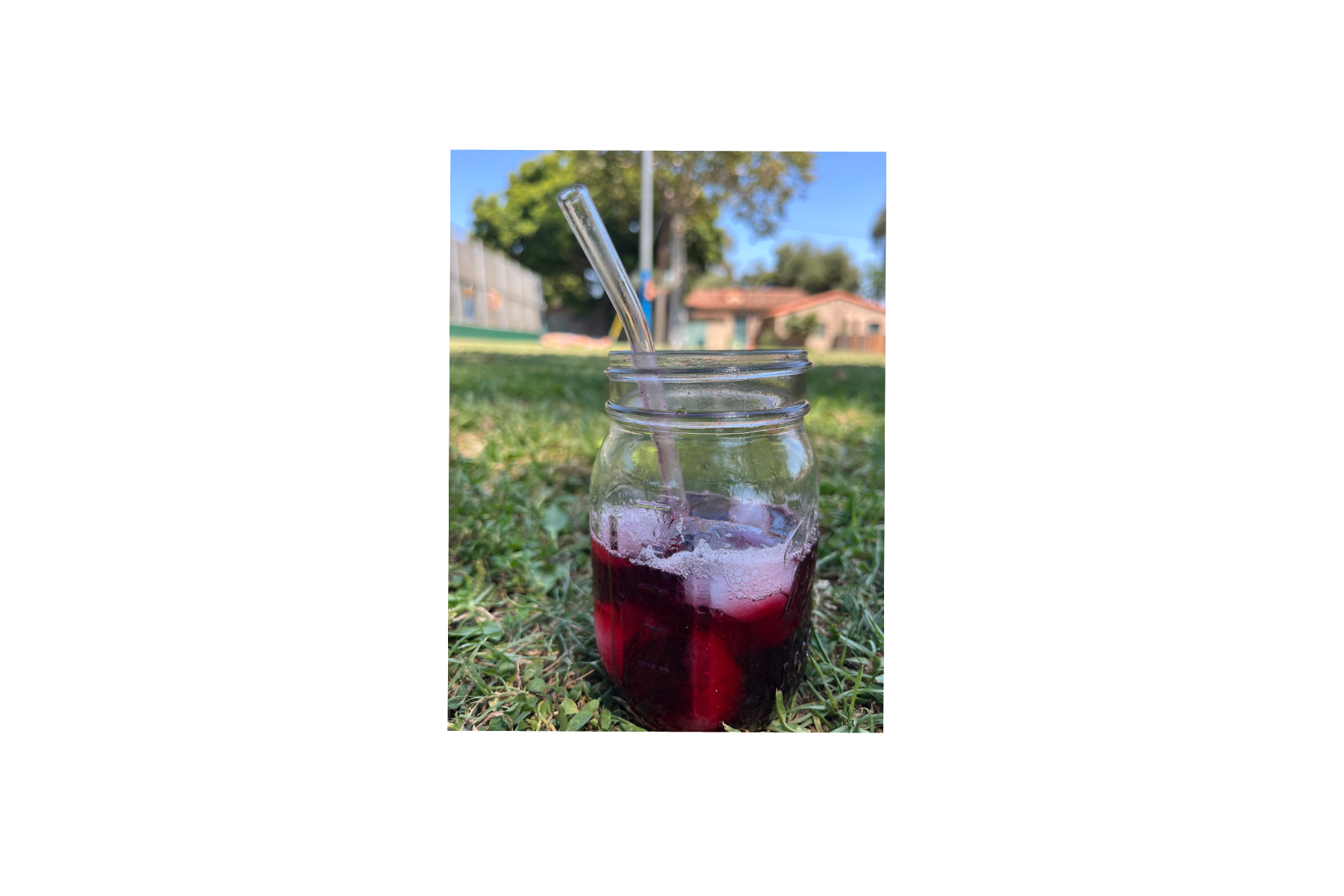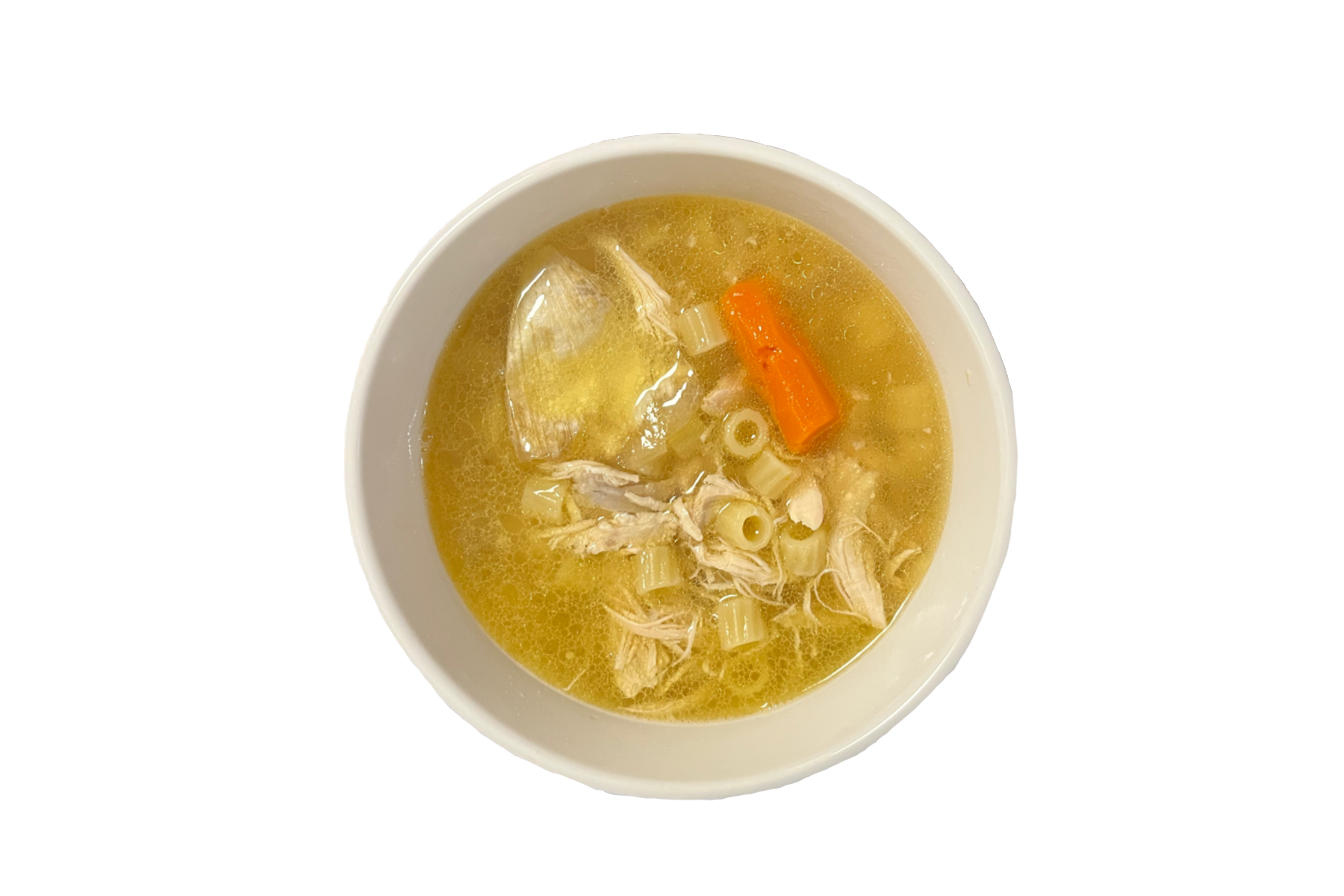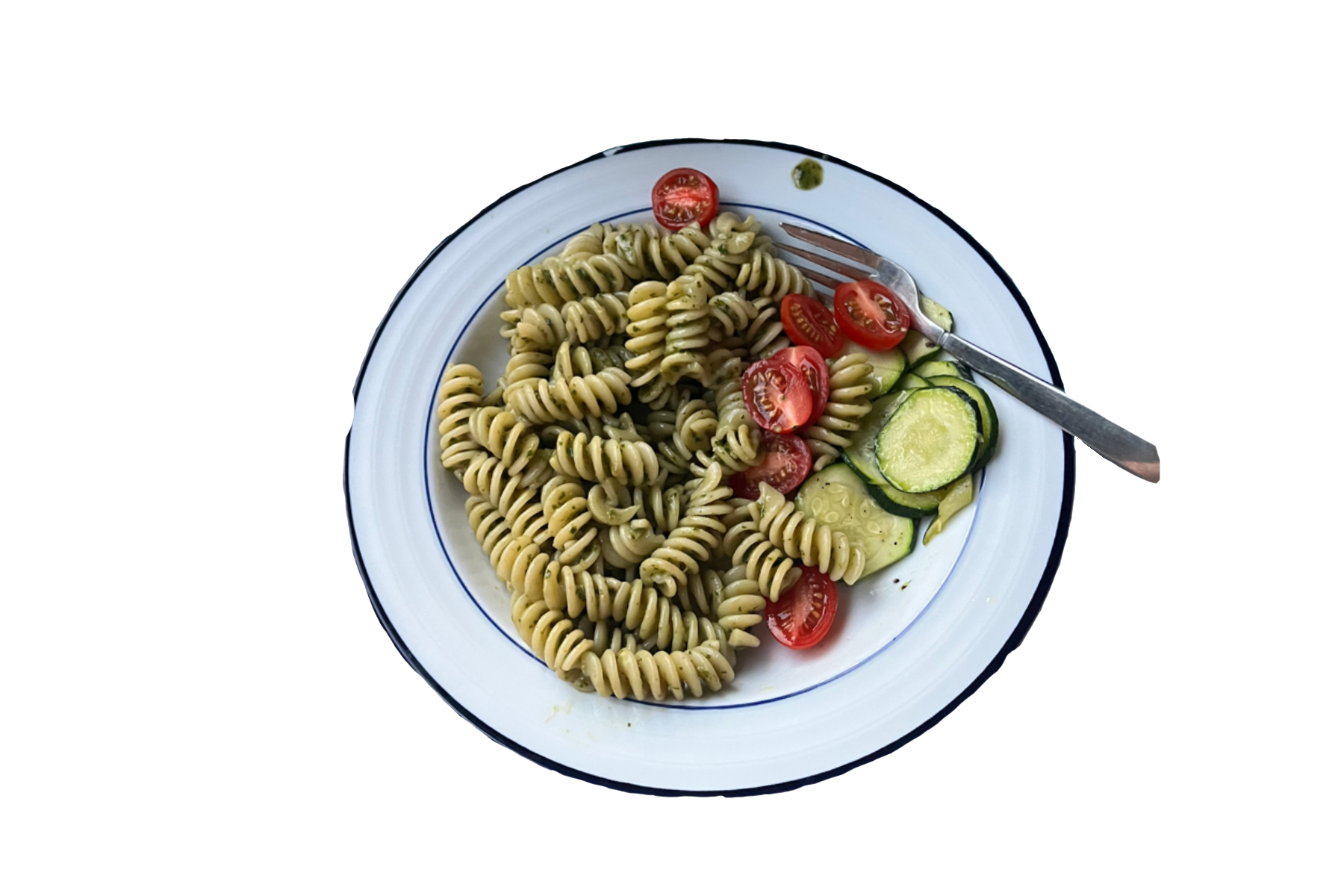Cooking journal august '25: agua de jamaica, chicken stock, basil pesto
agua de jamaica:

I’ve been making batches of agua de jamaica all month. It’s the most refreshing thing ever on a hot day. I think it’s best when it’s super concentrated and dark, which is rare to find in restaurants or cafes that sell agua de jamaica or any other hibiscus based tea. Though there’s one chilaquiles stand in San Francisco outside the Ferry Building that makes the darkest most intense agua de jamaica I’ve ever had. It’s a beautiful color, an inky magenta-maroon so dark it looks black in the shade. I use a ratio of about 1:1 or even 1 ½:1 of cups of hibiscus flowers to water. I’ve been adding a few slices of lemon or orange peel to that as well. It adds a little extra something.
I bring the flowers and the water to a boil, then lower down to a simmer for 5 minutes. I let it cool completely with the flowers to continue steeping. I strain the flowers out and add sugar. Then it’s done! I keep a big mason jar of it and pour it over a glass of ice whenever I want. The flavor is floral, fruity, tart, and a little earthy. Something I recently learned is that hibiscus flowers contain a lot of pectin. That means drinking agua de jamaica has the added benefit of being good for your tummy.
chicken stock:

I think homemade chicken stock is one of the best things in the entire world. It's definitely one of the best things I can make. If not the best. Both my parents treat chicken soup as a medicinal miracle drug. Growing up, chicken soup was always the go- to prescription for anything from a cold to a bad mood. And it’s also just really good. Despite the heat wave, I was really craving a bowl.
I used four chicken backs. There is a secret ingredient to my family’s chicken stock recipie, which is chicken feet. This is the first time I’ve used them in my own stock because I usually have a hard time finding them for sale in small quanitites. And also they are a little gnarly. The feet contain a lot of extra collagen and flavor. It’s not essential, but I did notice a richer texture and flavor. I added 3 to this batch. I browned the chicken backs and feet on high heat in olive oil skin-side down. The backs I got this time were really fatty so I rendered most of it off.
Then I added water to the top of the pot. I brought it to a boil, lowered it to a simmer, and skimmed the nasty looking brown foam that forms on the top. I guess the foam is protein. I also added a carrot, half an onion, and a few cloves of garlic. Those are just the aromatics my family uses. I always want to try adding celery or herbs, but I’m weirdly unusually afraid to stray from routine when it comes to chicken soup. Last time I made this, I added a few peppercorns and a bay leaf and I thought that was really nice. I didn’t do it this time and regretted it. I covered it almost all the way and let it simmer on the lowest heat possible for about 5 hours.
Making any kind of stock feels like a magic trick. You lift the lid and this pile of grotesque bones covered in guts, scary feet, and raw vegetables is turned into the most delicious clear yellow-gold broth that shimmers and wobbles invitingly in your spoon. The meat is so tender it falls into delicate ribbons with a gentle stab of a fork. And I think that’s what’s representative of why cooking is so exciting to me. It makes me feel so accomplished to take an ingredient and not just cook it, but completely transform it.
When I’m sick, I like to have it with zucchini, chayote, avocado, carrot, and rice. When I’m not sick, I usually have it with pasta and whatever vegetables I have on hand if I’m feeling extra. This time I had it with tubetti pasta and carrot. I garnished it with a splash of olive oil, a pinch of freshly grated parmesan cheese, pepper, and a squeeze of lemon. I was going for more of a summery Italian vibe.
basil pesto:

I’ve been making a lot of pesto with pasta all month because basil is in season, so it’s generally pretty good and cheap. I also have a great recipe for kale pesto that I reverse engineered from an Italian restaurant in San Francisco. But I actually hadn’t made a traditional basil pesto in a while. I use almonds instead of pine nuts, parmesan cheese, basil, olive oil, salt, and pepper.
My basil pesto has been bothering me. It’s good, but it’s not great. And I only accept excellence when it comes to pasta dishes. Something is missing but I’m not really sure what. I’ve been trying to diagnose the problem.
My brother makes truly great pesto. I called him to see if he could diagnose my pesto problems. I described its flaws to him: good on its own, but once tossed with pasta a little dry, a little bland, and dull in color. He said I should add double the olive oil and try again. I did, and while the texture was significantly better and the flavor was a little better, it’s still missing something. Really good pesto has a roundness and richness to it that mine slightly lacks. And I don’t know exactly know why.
My brother precisely measures each ingredient on a scale. I don’t measure pesto, I rarely measure anything ever. I usually feel I’m confident enough in my sense of flavor that I usually don’t feel the need to measure unless I’m using ingredients I’m unfamiliar with. When following a recipe, I use measurements as guidelines more than rules.
I’m starting to think that in this case I might not have a good enough sense of the ratios of pesto ingredients for those training wheels to be off yet. It would make sense that the composition of pesto has to be more precise than something more forgiving like tomato sauce. I wrote off my brother’s obsession with measurement as overly neurotic, but it actually might have taught him how to have a good sense of the correct proportions of each ingredient.
Next time, I will follow a recipe. It might take some trial and error. I think I need to keep the same amount of olive oil and add more cheese and nuts. I thought it was possible that the blandness is the quality of the basil itself. That’s still possible, but I think the basil I’ve been using has been good enough. I will keep on experimenting.
